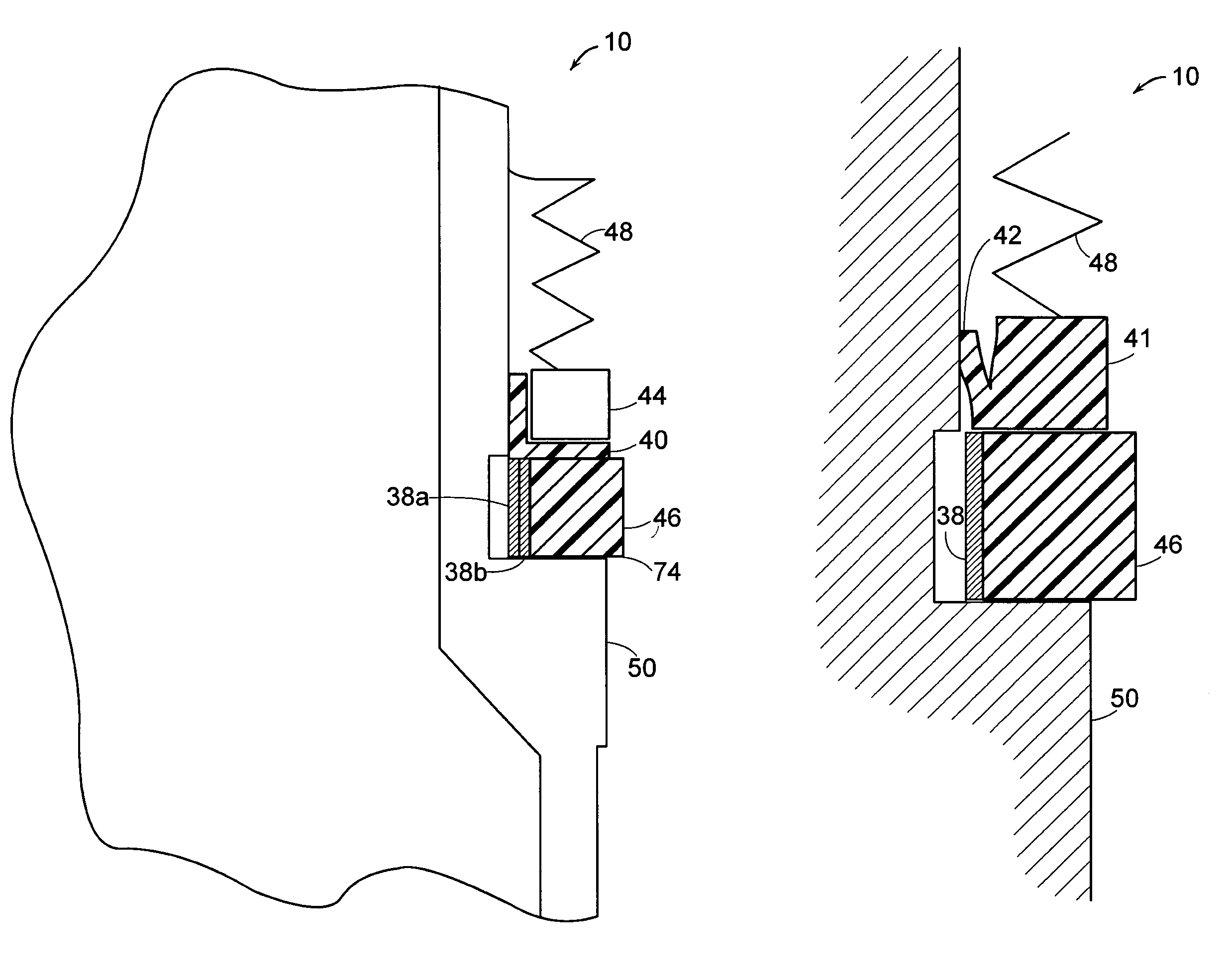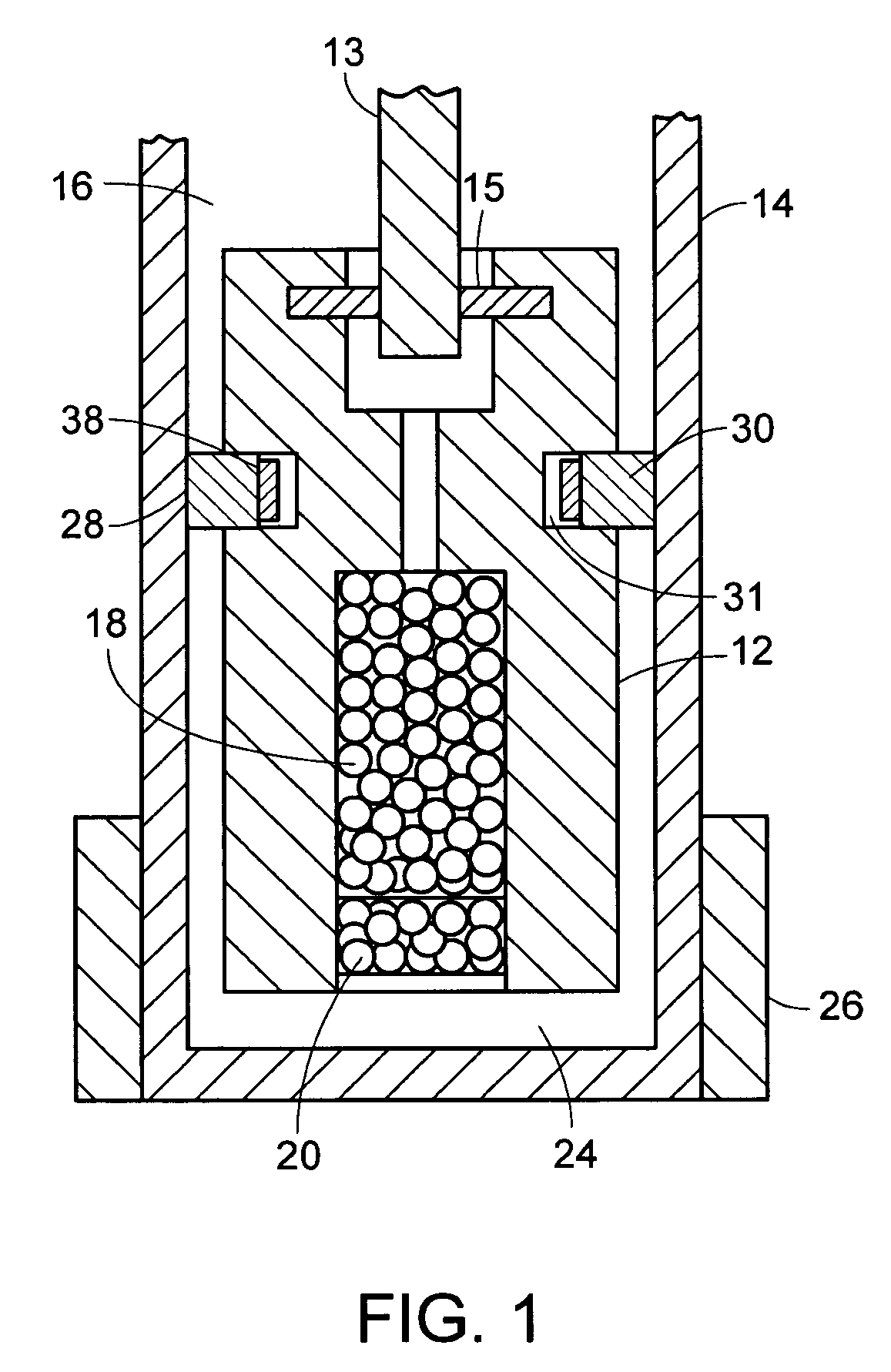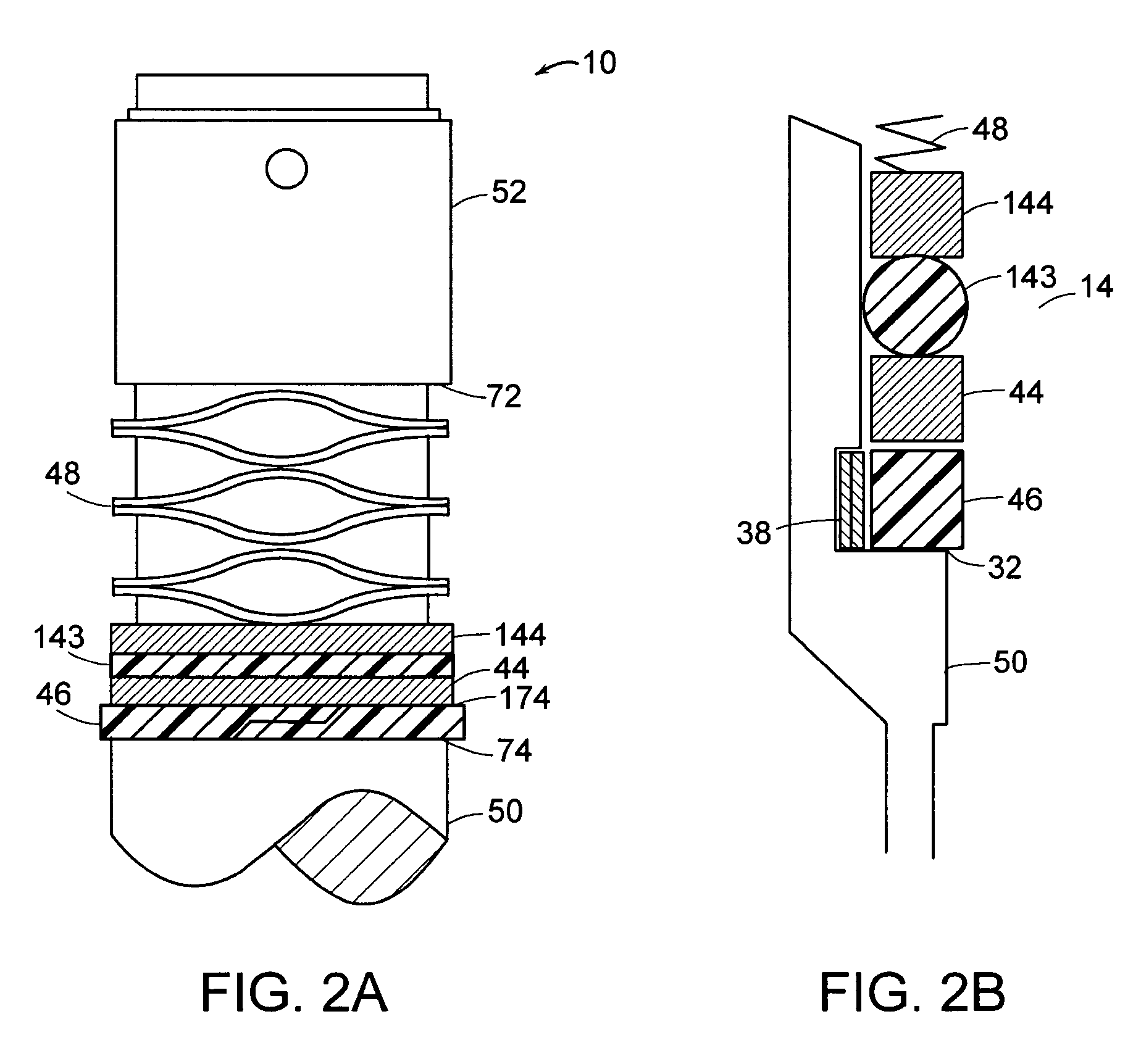Axial loaded seal system with a static L-seal
a static lseal and seal system technology, applied in brake systems, light and heating equipment, machines/engines, etc., can solve the problems of increasing leakage path, increasing the possibility of leakage in the seal, and increasing the sensitivity of the o-ring, so as to increase the leakage path, and reduce the risk of damage
- Summary
- Abstract
- Description
- Claims
- Application Information
AI Technical Summary
Benefits of technology
Problems solved by technology
Method used
Image
Examples
Embodiment Construction
[0026]A description of preferred embodiments of the invention follows.
[0027]FIG. 3 illustrates a cross-sectional view of an embodiment of a piston given generally as 10. Preferably the piston 10 is a displacer, such as is used in a cryogenic refrigerator. The piston 10 includes a body 50 having a circumferential groove. The circumferential groove includes a groove wall 74 formed in the body 50. The piston 10 also includes mounted within the groove, a polymer seal ring 46, two radial springs 38a, 38b, a polymer L-ring 40, a load ring 44, and an axial biasing mechanism such as a spring 48. The design of the piston 10 allows a user to displace the spring 48 such that the spring 48 loads the seal ring 46 within a narrow load range or tolerance. Neither the load ring 44 nor the radial springs 38a, 38b are required for the practice of the invention; however each provides additional benefits in establishing a more secure seal. The load ring 44 displaces the axial load from the wave spring ...
PUM
| Property | Measurement | Unit |
|---|---|---|
| radial force | aaaaa | aaaaa |
| thermal contraction | aaaaa | aaaaa |
| sealing force | aaaaa | aaaaa |
Abstract
Description
Claims
Application Information
 Login to View More
Login to View More - R&D
- Intellectual Property
- Life Sciences
- Materials
- Tech Scout
- Unparalleled Data Quality
- Higher Quality Content
- 60% Fewer Hallucinations
Browse by: Latest US Patents, China's latest patents, Technical Efficacy Thesaurus, Application Domain, Technology Topic, Popular Technical Reports.
© 2025 PatSnap. All rights reserved.Legal|Privacy policy|Modern Slavery Act Transparency Statement|Sitemap|About US| Contact US: help@patsnap.com



